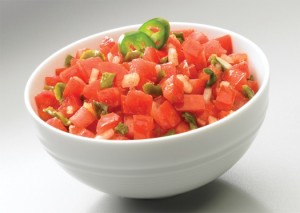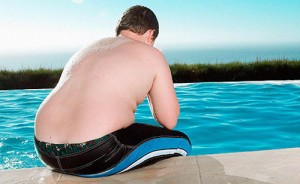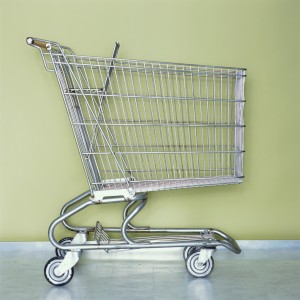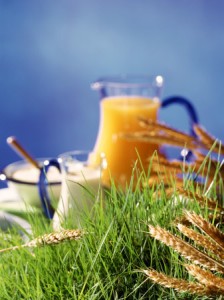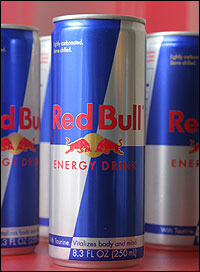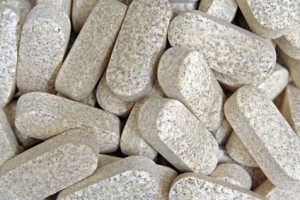Did you know that salsa has surpassed ketchup as America’s favorite condiment? Salsa can spice up all kinds of bland meals. Stir in a jar of your favorite salsa to add some zing to a pot of kidney, white, pinto, red or black beans; then top with a dollop of sour cream for a unique, high-fiber side dish.
March 22, 2012
March 21, 2012
How to Stop Yourself Eating from Boredom
 People who struggle with their weight are often prone to “emotional eating”, consuming food as a response to mental triggers rather than physical hunger. Often, dieters fail to lose weight not because their diet plan itself is flawed, but because they are knocked off course by feeling stressed, tired, upset or bored.
People who struggle with their weight are often prone to “emotional eating”, consuming food as a response to mental triggers rather than physical hunger. Often, dieters fail to lose weight not because their diet plan itself is flawed, but because they are knocked off course by feeling stressed, tired, upset or bored.
The last of these is an especially common cue for many people to eat. For some, it’s a habit learned in childhood (“I’m bored, mum!” – “Run down to the shop and buy yourself a candy bar, then.”) For others, it’s a reaction to the dull parts of adult life: munching on biscuits while rocking the baby to sleep, or getting yet another handful of chocolates because the afternoon is really dragging at work.
Avoid Snacking When You’re Bored
When you find yourself thinking, “I’m bored, maybe I’ll have a cookie,” then get straight out of that mindset:
- If you’re genuinely hungry, have some fruit or a small sandwich.
- Cravings can be beaten, just by sitting them out. Force yourself to wait 20 minutes before getting that snack, and nine times out of ten, you’ll no longer want it.
- Find something to do – ideally, an activity that makes it hard to eat at the same time.
Understanding Your Danger Points
Keep a food diary for a couple of weeks, and write down not only what you ate and when, but why you ate. (Hunger, because friends were eating, because it was lunch-time, boredom, stress..?)
When are you most likely to eat from boredom? Maybe it’s when you have to hang around at home, waiting for a delivery. Or perhaps it’s when you get in from work and you’re waiting for your partner to come home. Once you’ve figured out the pattern, work out how to change it!
- Find a hobby or interest to occupy you, if you’ve got too much time on your hands
- Use those “hanging around” moments, to blitz through all the little jobs you keep putting off (cleaning the oven, anyone?)
- If you’re regularly twiddling your thumbs at work, see if there’s a stressed colleague who could use your help.
What are your tips for avoiding boredom-induced snacking?
—
Article courtesy of: diet-blog
Image courtesy from: Tony Jalicea
March 19, 2012
6 Fitness Tips to Follow While Traveling
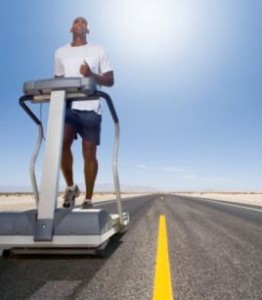 If on the whole you make the effort to eat healthy and have an effective exercise regime, you are likely to be concerned that any travel plans will derail this process. So here are some tips that will help you continue with your fitness programs even when you travel.
If on the whole you make the effort to eat healthy and have an effective exercise regime, you are likely to be concerned that any travel plans will derail this process. So here are some tips that will help you continue with your fitness programs even when you travel.
1. Do some homework before you leave. Check if the hotel that you plan to stay in has gym facilities or a pool and so on (depending upon your preferred workout activity).
2. Remember to pack workout clothes and shoes. This will remind you to work out and also make it convenient to hit the gym or simply head out for a walk wherever you are staying.
Workout shoes can be bulky so rather than carrying them in your baggage, you can simply wear them when you travel and instead pack the other less bulky shoes into your bag.
3. Carry a jump rope or a couple of dumbbells or kettle bells with you. A session with the jump rope can be a really strenuous workout in a short time, and doing a few weights with dumbbells or even lifting some bottles of bottled water can be a good workout.
4. Do other exercises that don’t need equipment – pushups, leg raises, squats, lunges and stair climbing are all easy to do wherever you are.
5. When eating out, order items that are steamed, grilled or poached. Avoid the items that are fried or calorie rich – if it says ‘crispy’ or ‘golden’, it’s probably been deep-fried, if it says ‘rich gravy or dressing’ that means high in calories too.
Also remember if it is a salad you’re ordering, ask for vinaigrette dressing rather than a cream or mayo-based one. Order small portions and opt for fruit instead of a confection at the end of the meal
—
Courtesy from FitnessHealthZone
February 25, 2011
New York mayor bans smoking in parks, beaches
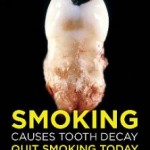 New York: the city that never smokes. Mayor Michael Bloomberg signed a law Tuesday banning smoking in parks, beaches and busy gathering places like Times Square, the health department said.
New York: the city that never smokes. Mayor Michael Bloomberg signed a law Tuesday banning smoking in parks, beaches and busy gathering places like Times Square, the health department said.
The law, approved by the City Council at the start of February, will be backed up with $50 fines, the department said.
It will take effect in 90 days, ending smoking in parks, pedestrian zones and 14 miles (23 kilometers) of beaches. Smoking is already forbidden in office buildings, bars and restaurants.
Health Commissioner Thomas Farley said the rules would make those public spots “healthier places than ever. I encourage those still smoking to take this opportunity to quit smoking today.”
—
Article courtesy from Yahoo! Health
Image courtesy from Gossip Jackal
February 4, 2011
Children Of Overweight Mothers Prone To Obesity By Age 6
By the time they are 6 years old, children of overweight mothers are more likely to be obese than children of lean mothers, according to a study in the January issue of the American Journal of Clinical Nutrition (2005; 81 [1], 140–46).
Researchers tracked 70 children over a 6-year period at The Children’s Hospital of Philadelphia and the University of Pennsylvania. Thirty-three had overweight mothers, and 37 had lean mothers. Weight and body composition didn’t change much between the two groups during the first 2 years of age. However, the high-risk group (kids whose mothers were overweight) had gained more weight than the other group by age 4. By age 6 the high-risk group not only weighed more but had more body fat.
Researchers pointed to the strength of genetic influences and suggested that efforts to prevent obesity should focus on such children at risk, preferably by the time they are 4 years old.
—
source: IDEA Fitness
January 31, 2011
Chocolate
Valentine’s Day is just weeks away, which means only one thing to many lovers: Time to bust out the chocolate! With all the recent media hype about the health benefits of this sweet concoction, many chocoholics are rejoicing. But can that solid chocolate heart from your sweetheart really be good for your ticker?
Health Benefits. Chocolate is made from cacao beans, which contain flavonoids,the same kind of beneficial plant compounds found in fruits, veggies, red wine and green tea. Research suggests that these flavonoids may have a positive effect on the cardiovascular system and may reduce the risk of heart disease and certain cancers. Other studies have linked chocolate consumption to reduced blood pressure, enhanced blood vessel function and improved cholesterol levels.
Cautionary Caveats. It should be noted that these protective health effects have been seen primarily with dark (not milk) chocolate, as dark varieties tend to have a higher proportion of flavonoids. The way chocolate is processed can also affect how much flavonoid content is retained. Finally, it is essential to remember that all chocolate contains high levels of fat and calories. The fat in chocolate can account for 50%–75% of its total calories, most of that being saturated fat from cocoa butter.
Comparing Varieties. Unsweetened cocoa contains 66 calories with 3.9 g of fat; baking chocolate weighs in at 142 calories with 14.1 g of fat; sweet dark chocolate has 143 calories with 9.7 g fat; semisweet chocolate yields 136 calories with 8.5 g of fat; milk chocolate packs 152 calories with 8.4 g of fat; and white chocolate yields a whopping 162 calories with 9.1 g of fat!
Choosing Wisely. Although some manufacturers have begun to list the candy’s cocoa content, even dark-chocolate lovers are mostly in the dark when it comes to picking the brands with high flavonoid levels. That’s why experts warn that chocolate should be consumed in moderation, as part of a healthy, varied diet. Eating any food in excess of caloric needs will result in weight gain.
January 29, 2011
Saving Dough When Shopping
Food prices are escalating at an alarming rate these days. Blame it on the rising cost of fuel to ferry food from farms to market and also the demand for ethanol gas, which is made from corn.
But there are ways to save money when food shopping if you are willing to put in the time and effort.
- Clip coupons to defray costs; use the weekly fliers that stores distribute to learn what’s on sale before you hit the aisles.
- Make a shopping list, and check it twice to avoid going to the store more often than necessary.
- Know the prices for the top 10 foods that you typically buy, and track those costs for several weeks. Once you know the typical price range, stock up when something goes on sale.
- Become a “member” at the stores where you shop most frequently, so you can make use of their cost-saving loyalty programs. Some stores will double coupons for members who show their card at the register, while others offer two-for-one bargains. Many stores are starting to accept coupons that are downloaded and printed off the Internet, and others now offer discounts to seniors.
- Shop at big-box stores for staples, such as paper goods and cleaning products. But do exercise caution, as the “savings” you realize can quickly be wiped out by impulse buys, like discounted flat-screen televisions or designer handbags–
Original Article from IDEA Fitness
January 20, 2011
Healthy Ingredients = Fewer Calories In Kids
Who says organic food isn’t worth the extra cost? A new study suggests that buying healthier but costlier ingredients may be the better deal in the long run. Replacing less healthy ingredients with more wholesome substitutes is not only more nutritious; it also reduces your kids’ daily caloric intake, according to a study presented last October at the annual meeting of the Obesity Society.
Researchers funded by the Robert Wood Johnson Foundation served breakfast, lunch and afternoon snacks to 26 children (ages 3–5) twice a week for 2 consecutive weeks. During the second week, however, the researchers prepared the snacks using lower-fat ingredients and more fruits and vegetables. Without changing the menu at all, they substituted healthy ingredients—for example, using 1% milk instead of whole milk and “hiding” veggie purées in pasta sauce.
During the second week, the children consumed about 400 fewer calories each day and—perhaps more important—did not compensate by eating more later in the day or the following day. According to a press release on the foundation’s website, “the findings indicate that healthy substitutions can significantly reduce caloric intake.” The researchers also noted that the children appeared to enjoy the healthier meals as much as the ones served the first week.
January 18, 2011
The Buzz About Energy Drinks
Last year, teenagers and young adults spent almost $2.3 billion on heavily caffeinated drinks with names like Monster, Red Bull, Amp and Full Throttle.
Evan Cathcart, 19, says a can of Red Bull gives him a quick boost when he’s skateboarding.
“I can skateboard longer and it tastes good,” Cathcart says. He’s always assumed energy drinks are more potent than Mountain Dew or Coke, but he says it’s unclear exactly how much caffeine they contain because it’s not labeled on the can.
In order to determine how much caffeine is contained in various brands of energy drinks, toxicology professor Bruce Goldberger of the University of Florida tested 10 drinks. He found a significant range of caffeination.
He found one of the energy drinks, Hair of the Dog, contained no caffeine. Another drink, a 16-ounce serving of SoBe No Fear, contained 141 milligrams of caffeine, which is the equivalent of almost five cans of Coke or 1 ½ cups of a typical brewed coffee. Goldberger also tested an 8-ounce sugar-free can of Red Bull, which had twice the caffeine of a can of Coke or Pepsi.
Caffeine researchers who’ve studied the effects of the stimulant on the body say there’s nothing alarming about the amount of caffeine in a single can of these energy drinks.
But experts say teens often don’t realize how much caffeine they’re drinking. And many teenagers also don’t know how easy it is to become dependent on the stimulant.
“If they use it for three or five days in a row, and then suddenly quit, then they’re going to be thrown into withdrawal,” says Roland Griffiths, professor of behavioral biology at Johns Hopkins University.
Withdrawal symptoms can include headaches, mood swings and trouble concentrating. Some people are more sensitive to stimulants than others, so some teens may get a bad case of the jitters from very little caffeine.
“I think it’s important that people recognize that caffeine really is a drug,” Griffiths says, “and that they accord it respect as a drug.”
Teens and young adults seem to be drinking more of these caffeinated beverages than ever. Two years ago, when Bruce Goldberger first began to study energy drinks, he found 10 brands.
“Now, the market has blossomed and there’s literally hundreds of energy drinks available,” Goldberger says.
As the market expands, some brands are pushing caffeine levels to new highs. One drink, called Cocaine and made by Redux Beverages, contains about three times as much caffeine as Red Bull. To publicize its drink, the company sponsors contests inviting contestants to submit wacky videos they’ve put on Web sites like YouTube or MySpace.
“They send us the videos,” says Redux’s Hannah Kirby, “and then we send them out a T-shirt and samples of the beverage. We’ve done a lot of stealth marketing.”
Energy-drink makers also market their products to teens and young adults by sponsoring sporting events or athletes who compete in extreme skiing, skateboarding or BMX biking.
“A lot of these energy drinks, ones like Monster, they catch on by word of mouth,” says energy-drink blogger Dan Mayer.
—
original article from NPR’s health blog
January 15, 2011
Are You Getting Enough Iron?
Iron deficiency is a potentially serious condition that affects more than 1 billion people worldwide. At the opposite end of the spectrum, high iron levels creates health problems for millions more. While most of us have normal iron levels, it’s important to understand the consequences of getting too much or too little iron, says nutrition expert Christie Knudsen, MS.
The Most Common Iron Deficiency
Why is iron so critical? Iron deficiency, or insufficient iron in the blood, is the most common nutrition deficiency; research has shown that in the United States alone, up to 10 percent of women of childbearing age and adolescent girls–and 9 percent of toddlers–are iron deficient. Severe deficiency can lead to fatigue and loss of energy, substantial reduction in work capacity, impaired behavioral and intellectual performance, impaired capacity to maintain body temperature in a cold environment, decreased resistance to infection, increased risk of lead poisoning and slow development in young children, and ultimately, death.
Iron deficiency can be caused by an underlying disease, such as stomach ulcers or an intestinal form of cancer, or by an imbalance between iron loss and dietary iron intake. The most common cause of iron loss is menstruation. Another risk factor for iron deficiency is pregnancy, when insufficient iron can cause premature delivery, low birth weight and even fetal death. Athletes are also at risk for iron deficiency, since strenuous or prolonged exercise can lead to iron loss. Vegetarians are vulnerable as well, because dairy products generally do not provide adequate iron, and the type of iron found in plant foods (nonheme iron) is poorly absorbed by the body.
Increasing Iron Intake
While reducing iron levels can be difficult or impractical, you probably can control how much iron you consume. Your goal should be to get the Recommended Dietary Allowance (RDA) of 10 milligrams (mg) if you’re a male over the age of 19, or 15 mg if you’re a female between the ages of 11 and 50 (10 mg if you’re over age 50). Pregnant women should get 30 mg of iron, and lactating women need 15 mg.
The most practical way to increase your iron intake is to eat iron-rich foods. Here are some examples: 4 ounces lean ground beef (2.0 mg iron); 4 ounces sirloin steak (2.6 mg); half chicken breast (1.1 mg); 1 chicken leg (1.7 mg); 1 can tuna in water (5.3 mg). Almonds, pumpkin seeds, raisins, lentils, pinto beans and tofu are also rich in iron, but these foods contain nonheme iron, which is not as easily absorbed as the heme iron in beef, chicken and fish. Eating vitamin C-rich foods, such as tomatoes or oranges, at the same meal will increase absorption of nonheme iron.
Preventing and treating even mild iron deficiency produces significant benefits. Raising blood iron levels to normal in children and adults can dramatically improve their ability to think and concentrate.
Too Much Iron
High iron levels in the blood can increase the risk of heart disease and cause extra wear and tear on tissues and organs, especially if the diet does not provide enough antioxidants, such as vitamins C and E. Hereditary hemochromatosis (HH), or iron overload, is the most common genetic disease in the United States. One in 10 people carry the genetic mutation, and one in 220 have the disease. Individuals with HH absorb 20 percent or more of the iron they eat in food, whereas people without the genetic mutation absorb between 3 and 13 percent.
The body has no way to get rid of iron except through blood loss. Any extra iron accumulates in tissues and organs, particularly the liver and pancreas, and can lead to cirrhosis, diabetes, arthritis or heart failure. Women are just as likely as men to have HH. However, since women lose iron through menstruation and pregnancy, they usually do not develop HH complications until they’re in their 60s or even older, whereas men typically begin showing signs of the disease in their 40s.
The only way to know if you have normal iron levels is to have a physician take a blood test. Then you’ll know if you need to correct an iron problem to regain your concentration and energy. Since there are serious risks associated with too much iron, taking a supplement without the advice and supervision of a physician is not appropriate.
—original article from IDEA Fitness
